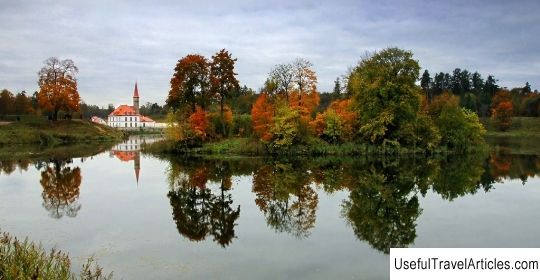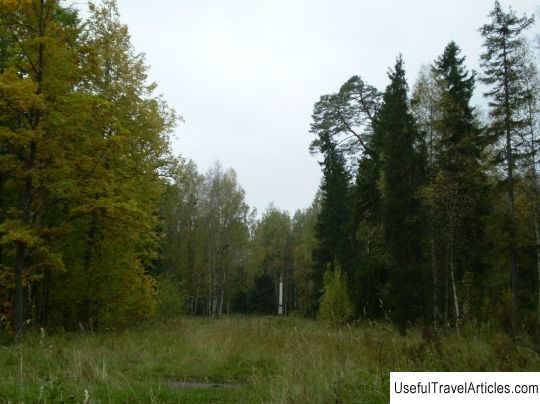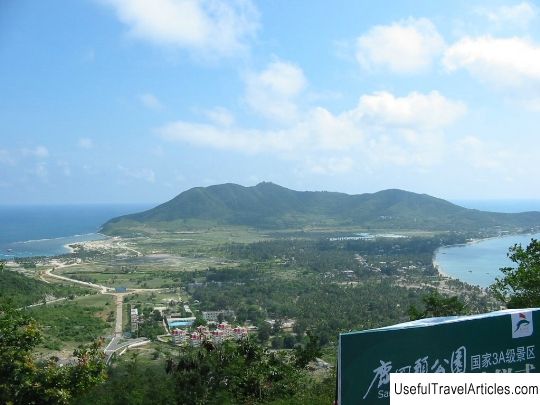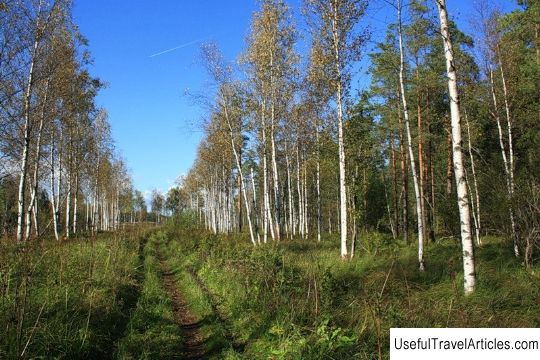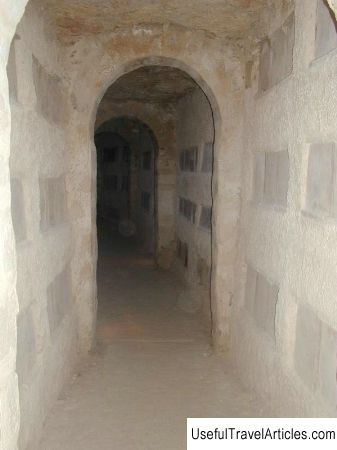Palace Park description and photo - Russia - Leningrad region: Gatchina
Rating: 8,7/10 (4890 votes) 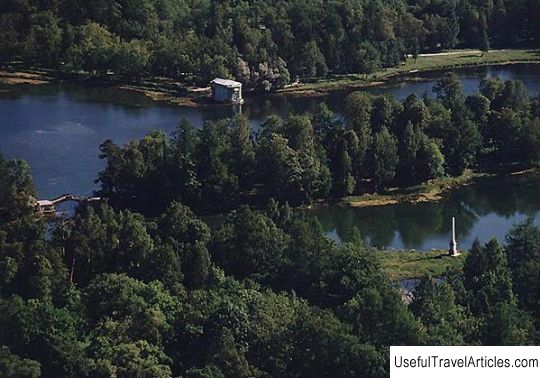
Palace Park description and photos - Russia - Leningrad region: Gatchina. Detailed information about the attraction. Description, photos and a map showing the nearest significant objects. Photo and descriptionThe Palace Park is the main attraction of Gatchina. This landscape park ensemble was created at the end of the 18th century, has an area of 143 hectares and is located in the very center of the city. In the southwestern part of the park, there is the main park structure - the Great Gatchina Palace. The composition of the park is suggested to the organizers of the park by the nature itself and the spatial structure of this area. The fourth part of the park's area is occupied by the water surface of the White and Silver lakes. Channels of canals and small rivers, ponds. The territories along the banks of the reservoirs have a tiered layout, which creates picturesque views from various points. The center of the Palace Park is the White Lake, through which two main compositional axes pass. The first one originates from the Great Gatchina Palace, then it goes through two lakes, the Venus Pavilion, the Birch Gate. The second axis departs from the Admiralty Gate and goes through the Long Island towards the Great Iron Gate. The palace park is made up of several parts, interconnected: the English Garden, the Private Garden, the Lower and Upper Botanical Gardens, the Lower and Upper Dutch Gardens, Love Island, Botanical or Flower Hill, Water and Forest Labyrinths. Gatchina Palace the park arose at a time when the fashion for regular gardens and parks was replaced by a passion for the so-called "English" or landscape parks, with its layout, repeating natural natural landscapes. The history of the park is divided into two periods of time - " Orlovsky "and" Pavlovsky ". The "Oryol" period of the park is associated with the owner of Gatchina, Count Orlov. Gatchina manor was purchased by Catherine II in 1765 from Prince B.A. Kurakin and presented to her favorite as a token of gratitude for her help during her accession to the throne. A few years later, the new owner laid the Great Gatchina Palace on the territory of the estate, and the creation of a landscape park began around it. The formation of the park began in 1770. The creation of the park was led by John Bush, a renowned gardener. Initial work was aimed at changing and processing the forest natural massif near Beloye Lake, planting rare and atypical trees for the forest of the northern strip. Mature trees were delivered from the Novgorod province. In addition, lakes were expanded, artificial islands were built, and walking paths were made. At this time, only a few permanent structures were installed in the park. The Chesme obelisk, the Column of the Eagle and the Echo grotto have survived to this day. After the death of Count Orlov, the future emperor Paul I became the owner of the manor. Under him, new trees were planted in the park in large volumes, large-scale landscape redevelopment was carried out, new park structures were erected. Construction of new structures began in the 1780s. Most likely, the first building under Paul was the Birch House in 1787, architect F. Violier. At the same time, the Great Iron Gates are being built. The main development of the park begins in the 1790s. During this period, the garden master James Hackett worked in the park. An Admiralty building is being built in the park for the construction and storage of pleasure boats of the small Gatchina fleet, in 1795 a pond was dug next to it for launching ships. A canal was laid in the center of the park, who separated part of the coast and created the Island of Love on the White Lake, which was decorated with the Pavilion of Venus (1792-1793). Until 1800, a regular park (Sylvia) is being set up in the northwestern part, in 1792-1793 a gate was erected on the border, after which this section becomes an independent park. The wooden bridges that existed earlier in the park are being replaced with stone ones. Simultaneously with these works, the part of the park adjacent to the palace is being developed. An octagonal well is being dug and faced with granite near the Silver Lake. In 1792-1793. on the site of a deep ravine, Karpin pond was created, in the shape of a jug. In 1794, a terrace of the Own Garden was built, a regular garden "Decanter" with a Turkish gazebo was set up. In 1797, according to the project of the architect N.A. Lvov amphitheater is being built for knightly performances. 13 stairs are being built in the Botanical Garden, in 1799-1801. greenhouses and greenhouses are being built here, the Humpback and Karpichny bridges are being erected. After the death of the emperor in 1801, active work was suspended. Subsequently, only the restoration of old buildings and the maintenance of the park in good condition are carried out.                      We also recommend reading Castle by the sea (Castello a Mare) description and photos - Italy: Palermo (Sicily) Topic: Palace Park description and photo - Russia - Leningrad region: Gatchina. |
